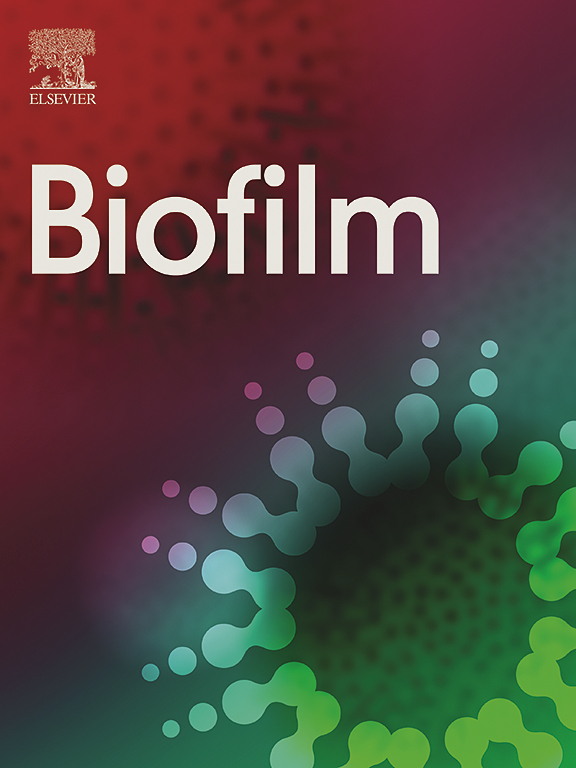Dual red and near-infrared LED therapy inhibits MRSA biofilm in otitis media
IF 4.9
Q1 MICROBIOLOGY
引用次数: 0
Abstract
Otitis media (OM), particularly when caused by methicillin-resistant Staphylococcus aureus (MRSA), can become refractory due to biofilm formation, which contributes to resistance against conventional antimicrobial treatments. Photobiomodulation using light-emitting diode (LED) therapy has recently emerged as a promising non-antibiotic strategy for managing refractory infections by targeting biofilm-associated pathology. However, especially in the context of MRSA-induced OM, its therapeutic efficacy and underlying mechanisms remain incompletely elucidated. In this study, we established a rat model of OM by inoculating MRSA (5 × 108 CFUs) into the middle ear via the tympanic membrane. Red and near-infrared (NIR) LED irradiation (655/842 nm; 163.2 W/m2; 30 min/day for 5 days) was administered 1 week after infection. Scanning electron microscopy revealed a marked reduction in MRSA biofilm structures, and biofilm biomass was significantly decreased, as assessed by crystal violet staining. Quantitative real-time polymerase chain reaction (qRT-PCR) analysis demonstrated significant downregulation of fib, icaB, icaC, and icaD, key genes crucial for bacterial adhesion and biofilm development. Histological assessment further showed decreased mucosal thickening and macrophage infiltration, supported by reduced ionized calcium-binding adapter molecule 1 (Iba1) expression. These findings suggest that dual red and NIR LED therapy effectively suppresses MRSA biofilm formation and inflammation in OM, indicating its potential as a novel non-antibiotic therapy for biofilm-associated OM that may help manage persistent or treatment-resistant cases in clinical settings.
双红色和近红外LED治疗抑制中耳炎中的MRSA生物膜
中耳炎(OM),特别是由耐甲氧西林金黄色葡萄球菌(MRSA)引起的中耳炎,可由于生物膜的形成而变得难治性,这有助于对常规抗菌治疗产生耐药性。使用发光二极管(LED)治疗的光生物调节最近成为一种有前途的非抗生素策略,用于通过靶向生物膜相关病理来治疗难治性感染。然而,特别是在mrsa诱导的OM的背景下,其治疗效果和潜在机制仍未完全阐明。本研究通过中耳鼓膜接种MRSA (5 × 108 CFUs),建立大鼠OM模型。感染1周后给予红色和近红外(NIR) LED照射(655/842 nm, 163.2 W/m2, 30分钟/天,持续5天)。扫描电镜显示MRSA生物膜结构明显减少,生物膜生物量明显减少,通过结晶紫染色评估。定量实时聚合酶链反应(qRT-PCR)分析显示,fib、icaB、icaC和icaD这些对细菌粘附和生物膜发育至关重要的关键基因显著下调。组织学评估进一步显示粘膜增厚和巨噬细胞浸润减少,这与离子钙结合适配器分子1 (Iba1)表达减少有关。这些发现表明,红色和近红外双LED治疗有效地抑制MRSA生物膜的形成和OM中的炎症,表明其作为一种新的非抗生素治疗生物膜相关OM的潜力,可能有助于治疗临床环境中的持续性或治疗耐药病例。
本文章由计算机程序翻译,如有差异,请以英文原文为准。
求助全文
约1分钟内获得全文
求助全文

 求助内容:
求助内容: 应助结果提醒方式:
应助结果提醒方式:


